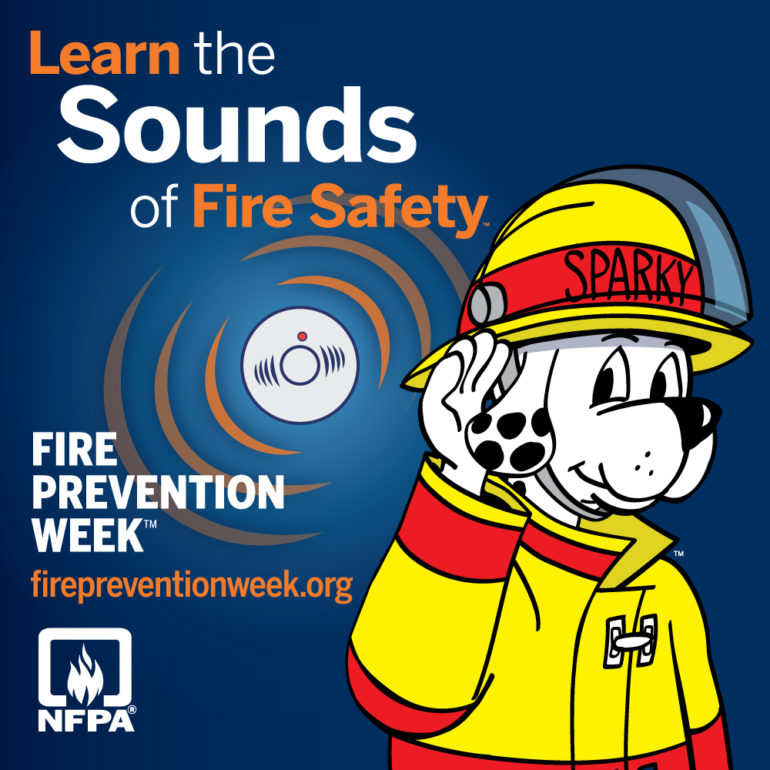 The week of October 3 thru the 9th is National Fire Prevention Week. Public Education Coordinator, Alan Zygmunt of the Department of Emergency Services and Public Protection and the Connecticut Fire Academy want all citizens to know what your smoke or Carbon Monoxide alarms are telling you. “Smoke Alarms and Carbon Monoxide Alarms have different sounds of alarm,” Zygmunt stated, “everyone in your home must know what alarm is sounding and what it is telling you.” In both cases, everyone in the home must be notified and evacuate the home. Once everyone is out, contact 911 to have the fire department respond and check the home.
The week of October 3 thru the 9th is National Fire Prevention Week. Public Education Coordinator, Alan Zygmunt of the Department of Emergency Services and Public Protection and the Connecticut Fire Academy want all citizens to know what your smoke or Carbon Monoxide alarms are telling you. “Smoke Alarms and Carbon Monoxide Alarms have different sounds of alarm,” Zygmunt stated, “everyone in your home must know what alarm is sounding and what it is telling you.” In both cases, everyone in the home must be notified and evacuate the home. Once everyone is out, contact 911 to have the fire department respond and check the home.
Smoke Alarms make a continuous alarm or a series of three long beeps– Smoke alarms give your family early warning so escaping is the first action.
Carbon Monoxide Alarms make a series of four beeps in rapid succession – Carbon monoxide is colorless and odorless so the alarm may the only way you know that this harmful gas is present in the building.
Check all the Alarms in your Home – Fire safety professionals suggest to test all alarms monthly, this test will show you the sounds that each alarm makes when it is alarming.
My alarm is “chirping” every so often – When alarms “chirp”, make a short beep every minute or so, it is telling you that the battery needs replacing. Change the battery immediately to ensure the alarm continues to work.
Check the date on your detectors too – All smoke and CO alarms have a date of manufacture printed on them. If you detector is over 10 years old, replace the entire alarm.
Each year fire prevention week is held during the anniversary of the Great Chicago Fire which happened on October 9th of 1871. The week has been recognized nationally every year since 1922. Check with your local Fire Department to see what events are planned for your community.
The Connecticut Fire Academy is the teaching arm of the Connecticut Commission on Fire Prevention and Control. Part of their mission is educating the public in fire and burn prevention. For additional resources on Fire safety visit http://www.nfpa.org/fpw .